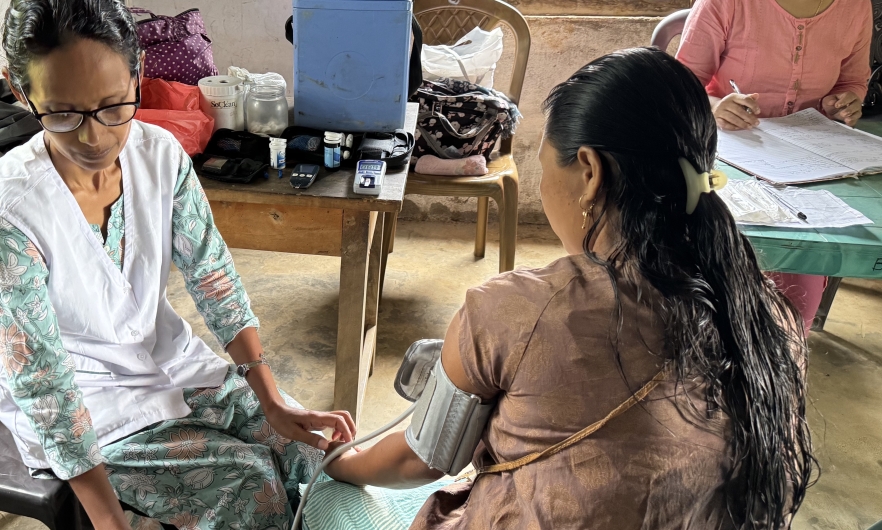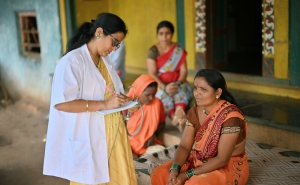The Current and Future Outlook for Primary Health Care in South Asia
Noncommunicable diseases, urban health, and community health worker roles are key issues.

South Asian countries face many common health challenges due to noncommunicable diseases, population aging, rapid urbanization, socioeconomic inequalities, and low public spending on health. Orienting health systems towards primary health care can serve as a cost-effective strategy in addressing these challenges in South Asia and other low- and middle-income countries.
A new series published in The Lancet Global Health and The Lancet Regional Health Southeast Asia draws learnings from implementation of primary health care programs in five countries: Bangladesh, India, Nepal, Pakistan, and Sri Lanka. A global launch event organized by The Lancet exploring learnings from the series will be held on October 1, 2024 at 9 a.m. EDT.
The series is edited by Krishna D. Rao, PhD ‘04, MSc, associate professor in International Health, and provides recommendations on improving primary health care in the South Asia. Major themes of the series include: the growing burden of noncommunicable diseases, which disproportionately impact marginalized populations; the growth in urban populations, resulting in socioeconomic inequalities and health disparities; and the key role community health workers play in improving population health and the importance of investing in them.
Noncommunicable diseases: The region has a high burden of noncommunicable diseases, such as heart disease, diabetes, cancer, and chronic respiratory diseases, as well as a high rate of modifiable risk factors, such as tobacco and alcohol use, unhealthy diet, and lack of physical activity. While there is political commitment to address NCDs across the region, there are challenges in doing so, such as shortages of human resources and essential medicines, as well as a lack of funding. Authors emphasize integrating NCDs into the primary care system by implementing early detection of NCDs at the primary care level, dedicating funding for uninterrupted supplies of essential NCD medicines and technologies that can be delivered at primary care facilities, and improving the capacity of health workers to care for NCDs.
Urban health: South Asia is rapidly urbanizing. Its cities are often challenged to provide quality health care or healthy living and working conditions to all residents. Large inequalities in health characterize the region’s cities. Addressing these challenges through primary health care requires a multi-sectoral response with effectively resourced urban local bodies, such as those in housing and sanitization, and increased public financing for health care. “Policies should ensure quality services and financial protection through expansion of public sector services and strategic engagement with private providers, particularly those serving low-income urban populations,” says Rao, who is first author on the urban health paper in the Lancet series.
Community health workers: Community health workers are the backbone of primary health care service delivery. South Asia’s current and future health challenges require further adaptations of community health worker (CHW) programs. Yet, in many South Asian countries, CHWs are not formalized within the health systems and not treated or paid adequately as professional health workers. Strengthening CHW programs in South Asia requires sufficient, dedicated, and consistent public funding, supporting career pathways that foster professional development, providing greater clarity of roles and responsibilities, and better integration into the health care workforce.
The series concludes with nine action items for policy- and decisionmakers to reorient health systems towards primary health care:
- Contextualizing policies on primary health care.
- Scaling up innovations.
- Allocating adequate financial resources.
- Strengthening the governance function of health ministries.
- Establishing meaningful public-private engagements.
- Using digital health tools.
- Reorganizing service delivery.
- Enabling effective change-management processes
- Encouraging practice-oriented research.
Finally, more research-policy-practice networks on primary health care in South Asia can generate evidence, bolster advocacy, and provide spaces for cross-learning.





